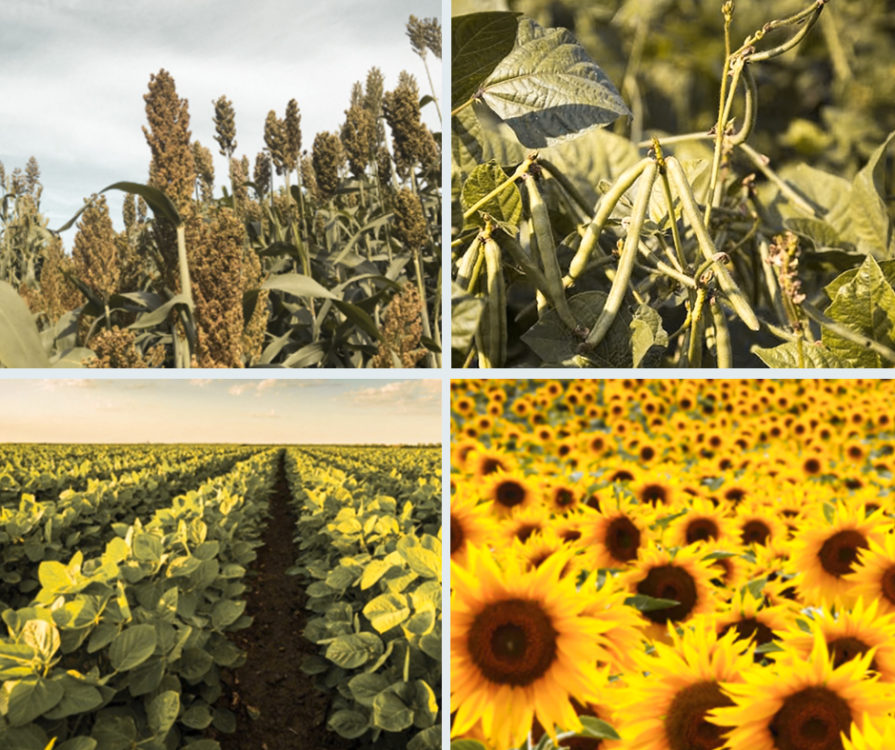Well, it’s June. What’s the only good thing about hunting when it comes to June? At least it’s one month closer to deer season! Which means its time for your summer food plots!
But hunters should really grow to appreciate the summer months. It gives you a chance to strategize and prepare for the next season. You could do things like go to the range, dial in your new scope, or give mother nature a little boost.
Taking control of your land and planting certain species of plants can seriously help next year’s hunt. This blog post will cover some of my favorite crops to grow in the summer on my food plots. But first, why should you be planting food plots in the summer?
Summer Food Plot Benefits
Planting food plots in the summer may seem odd to the uneducated. Why would you need to give them food when you can tt even hunt them yet? Well, summer can be a particularly hard time for deer to survive in. Forage is typically lower at this time of the year. Especially the further south you go, where heat and dry air play a major role.
Additionally, these plants can help keep the big deer in your area, stay in your area. Which greatly assists with taking down bucks in early archery season. Arguably the most important thing you get out of planting high-quality food plots is giving the animals high-quality nutrition. Which in turn helps them be healthier and grow larger.
What to Plant on Your Summer Food Plot
#1 Soybeans
A classic amongst food plots and one that does especially well during the summer months. They come in at 20% crude protein, which is more than the required amount for deer. They also have the added befit that if you do not harvest them, the pods will continue to be foragible through the winter. What is arguably the biggest benefit of having soybeans in your food plot is they can be sprayed with herbicide. All but eliminating the risk of weed competition. Which is what puts it at number one on this list.

#2 Grain Sorghum
Grain Sorghum is a great addition to any food plot. It is easy to grow and widely loved by all animals. Especially whitetail deer, wild turkey, and almost any other birds.
“Sorghum is truly a versatile crop that can be grown as a grain, forage, or sweet crop. Sorghum is one of the top five cereal crops in the world. The United States is the world’s largest producer of grain sorghum, having produced 373 million bushels in 2020.
Sorghum is among the most efficient crops in conversion of solar energy and use of water and is known as a high-energy, drought-tolerant crop that is environmentally friendly. Due to sorghum’s wide uses and adaptation, “sorghum is one of the really indispensable crops” required for the survival of humankind (From Jack Harlan, 1971).
https://www.sorghumcheckoff.com/all-about-sorghum
#3 Cowpeas
Another pretty popular crop to plant in warm weather is cowpeas. They are similar in makeup to soybeans. In the way that they are high protein legumes, that more than meet the deers’ requirements. They do great being paired with plants with taller plants like sunflowers or the previously mentioned grain sorghum. They are not as “Round-Up Ready” as some of the other species, that being their one fault.
#4 Lablab
One final legume is worthy of a pot on this list. That being a lablab. Another warm season legume e that makes for excellent forage. Like the other legumes on this list, its protein levels are more than adequate for the deer. The unique thing about lablab that sets it apart is how long it lasts into the growing season, making it foragable for longer.
Like cowpeas, lablab is viny and does well when mixed with corn and sunflowers. Their ability to be tolerant of droughts is also a major plus.
#5 Sunflowers
Switching the focus to plants that are loved by birds (turkeys, quails, doves, and pheasants) sunflowers! A name anyone is familiar with, sunflowers make an excellent addition to any summer food plot. They produce small black seeds that are both high in oil content and sustainability in almost any environment. Although they can be planted alone, their 100 days growing cycle makes them easy to be targeted in their growth phase. So planting them in combination with the other plants on this list is your best bet for great results.
